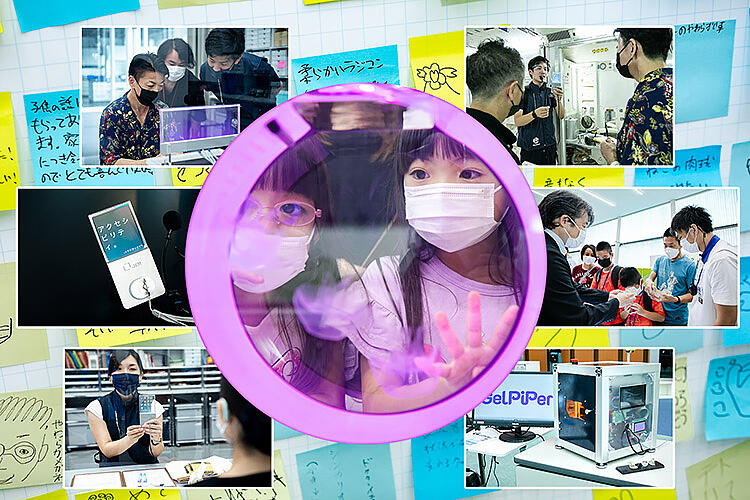
"Research Facilities" at Miraikan features cutting-edge research projects all the time, for which daily research and science communication activities of "research created by everyone" are conducted with visitors and Science Communicators (SCs). It is a pioneering effort on a global scale. A "laboratory in a science museum" is a valuable place - for scientists/researchers to conduct demonstration experiments and deliver information, and for the general public to have direct contact with leading researchers. We will continue to consider new forms of research "created by everyone" through the activities of research projects in Research Facilities.
Research Facilities that have been in place since Miraikan opened
Do people know Miraikan has real "laboratories"? The place called "Research Facilities" is located at the far end of the hallway of the Permanent Exhibitions on floors three to five. At present, twelve research projects are being conducted from universities, research institutes, and private companies, each doing research and science communication activities on a daily basis.
Research Facilities have been established when Miraikan opened in 2001. The thought that visitors would become interested in research activities through "direct contact with researchers" was behind the decision. However, as a science centre/museum seldom had full-fledged laboratories, "it was and is a unique idea and a pioneering initiative on a global scale," says Yuta Tanimura, Office of Museum Operation, Miraikan.
"In the beginning, we provided laboratory tours so that visitors could see the real research. Now we focus on having researchers come out to the exhibition floors to dialogue with visitors, holding online events by researchers from different fields, and encouraging visitors to participate in demonstration experiments".
Research Facilities aims for "a place where everyone can work together to build and support research."
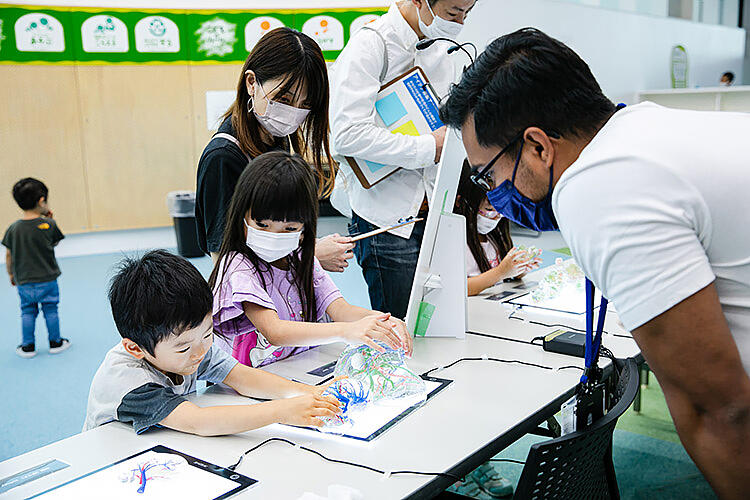
Demonstration Experiment on Accessibility
On the permanent exhibition floor on the third floor, we saw an "exhibition tour" in which visitors participated. The guide was an SC, Sakiko Tanaka. In front of the Miraikan's symbolic exhibit "Geo-Cosmos," she asked questions to participants while holding a small transparent panel in her hands.
"How far away from the earth can you say is 'space' ?"
Then, the words she spoke appeared in real-time as letters on the transparent panel.
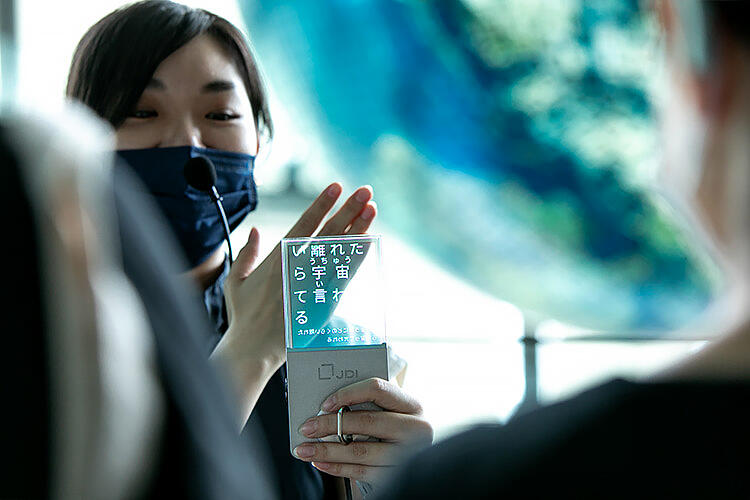
The official name of the panel is "See-Through Captions." It is a communication tool for the hearing impaired developed by the "xDiversity (cross-diversity) Project," which stations in Research Facilities. The exhibition tour also serves as a demonstration experiment to see how the tool can improve accessibility.
"It's less stressful because I can read the subtitles while looking at the other person's face and the exhibits. It would be nice if we could use it instantly, just like a cell phone," Sayaka Kobayashi, one of the participants, expressed her hope.
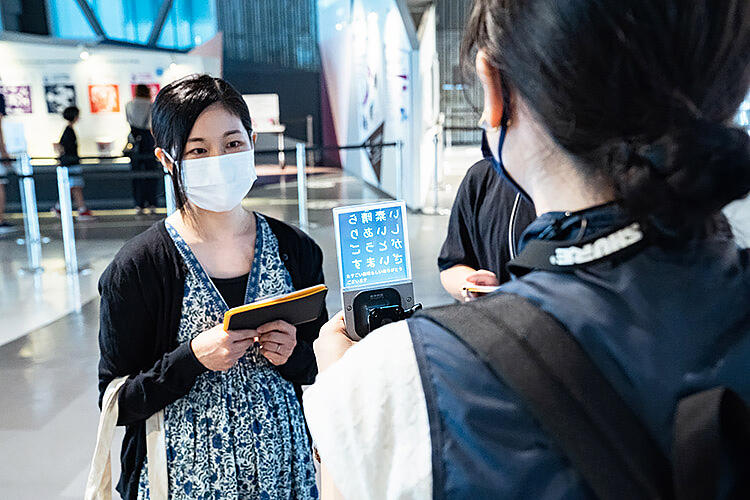
SC activities are a collaborative effort with researchers
Akihisa Shitara, a member of the team that develops this tool, began his research on communication tools in the laboratory of Yoichi Ochiai, an associate professor at the University of Tsukuba, and is currently doing research activities at the "xDiversity Project." Shitara himself has an inherited hearing disability.
"An SC asked me if the tool could be used as a guide for the hearing impaired, and we decided to work together."
Shitara suggested to the SC that the tabletop prototype he had been developing be placed at the reception of Miraikan. Later, as they discussed with other researchers and SCs, the idea developed of using it for exhibition tours. They then made it small enough to hold in one hand, and actually used it in the tour. The response was so great that Shitara said, "I didn't expect to get such a reaction."
Tanaka recalls, "I realized that putting spoken words into letters made it easier for everyone to understand what the speaker is saying, not just for the hearing impaired."
Another SC in charge of the project, Bunsuke Kawasaki, says, "Activities in Research Facilities are in collaboration with researchers."
"We SCs are trying out the developed things and work together to come up with functions and designs. If I tell Mr. Shitara that, for example, voice control is easier to adapt to the participants than button control or that we want it to be hands-free to use sign language, he will implement it immediately. I feel like I'm working with researchers to promote the study rather than helping with the experiments."
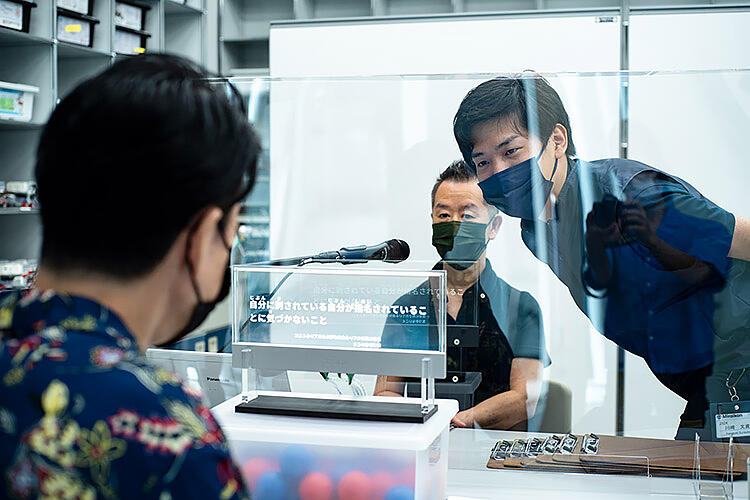
Shitara, who has been working with various people in Research Facilities as described earlier, says laughing, "I still need to get more people involved," and talks about his goal to make more research friends.
"I would like to use this place to host junior and senior high school students familiar with technology, and encourage each one of them to think about a future they envision. I then want this to be a place that can support them when they become university and graduate students."
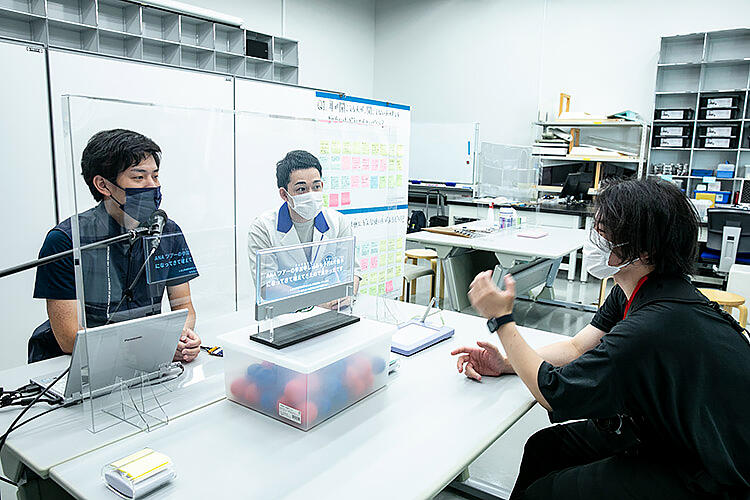
A "Touch" exhibition even during the Covid-19 epidemic
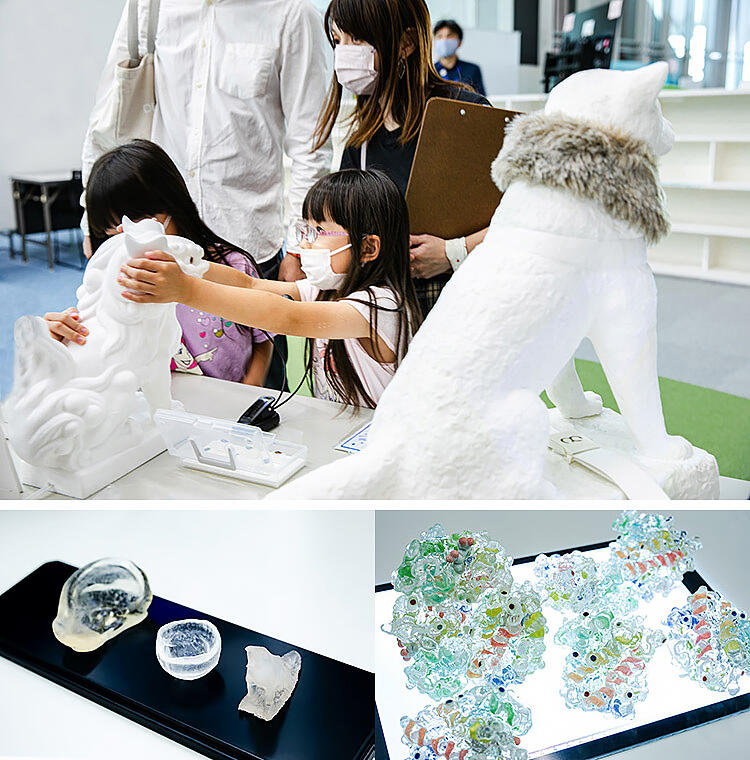
Research projects by local universities also station in Research Facilities. Yamagata University's "Project toward 'Smart Soft-Manufacturing Revolution'" is one of them.
One weekend at Miraikan, which came alive again after the declaration of the Covid-19 emergency was lifted, there was an event called "Let's experience it! The Future Opened Up by Soft Materials". It took place at the "Curiosity Field" on the 3rd floor.
At the venue, there are various "works" made of soft materials called "gel," including a dog-shaped robot "Gel Hachiko," jellyfish wiggling about in a water tank, organ models with even the smallest blood vessels reproduced, and protein models in complex shapes. Visitors are allowed to touch them.
"Only those experienced can understand this, but people do somewhat want to touch things when they are soft."
So said Hidemitsu Furukawa, the Research Director of the Project toward "Smart Soft-Manufacturing Revolution." All the exhibits in this event are research outcomes of the project.
"What we're working on here is research to enrich our lives and solve social problems by using the gel materials we have developed."
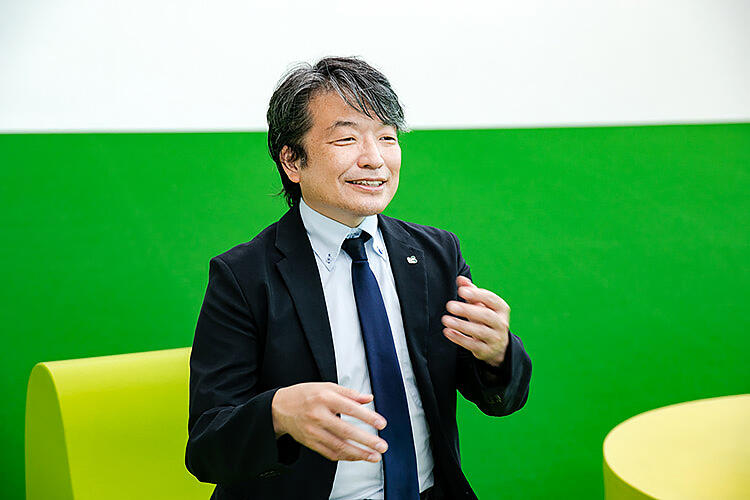
Outlandish ideas from visitors
Furukawa moved into Research Facilities two years ago. It all started when he participated in an exhibition event at Miraikan, where he presented the results of his research project. He brought with him a 3D gel printer he had developed.
"At that time, the situation was that nobody would look at a '3D gel printer,' but when I displayed it there, I received many responses from visitors, such as, 'It would be interesting if a 3D printer could make food.' I got a feeling that there might be discoveries in communications that would lead to my following research."
Having learnt that Miraikan had Research Facilities, he immediately decided to move in.
However, it was at this point when Miraikan's event activities got restricted due to the spread of Covid-19. Against this backdrop, Mr. Yusuke Date, an SC, supported the research projects by planning and holding online events.
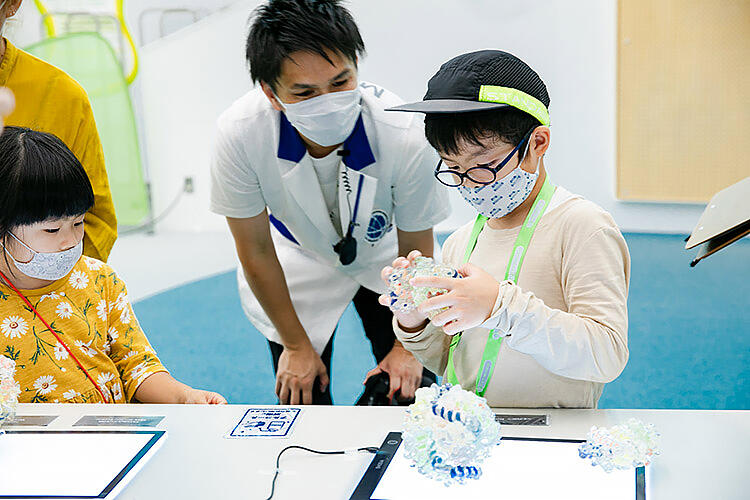
"Actually, this is the first in-person event we've held at Miraikan since we moved in. Visitors could better understand 'what gel is like' through experience if they touch it with their own hands."
In this exhibition, Date arranged to share the visitors' feedback and suggestions by putting notes aboard.
"We have received so much feedback that the board got filled in just half a day, which I think is because of the real experience of seeing and touching gel."
Looking at the visitor's comments all over the board one by one, Furukawa continues. "Some are outlandish, like, 'Please soften my house.' But getting different ideas from other people gives me courage and motivation."
He says, smiling, that when he finds himself in an impasse during his research, he "feels a little healthier" by getting opinions from visitors, SCs, and other researchers in Research Facilities.
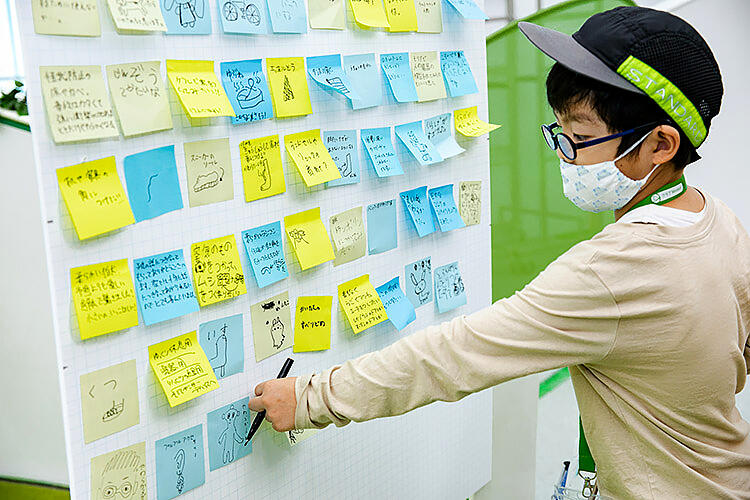
Science museums across the country should have a place to meet researchers
Research Facilities has been connecting cutting-edge researchers with visitors since Miraikan opened. Tanimura says that researchers' awareness has changed considerably over 20 years of operation.
"If your laboratory is inside a museum, you have the opportunity to regularly interact with visitors. I believe the researchers in Research Facilities are motivated to listen to visitors' voices, and work together to build research towards a future society."
The activities in Research Facilities are not conducted by researchers alone, but rather researchers, Miraikan and visitors promote those activities and develop them together.
"As you walk around the museum, you can knock on the door of a research laboratory; It's a great environment that researchers you don't normally meet are there on a day-to-day basis, and you can always talk to them."
In the future, he would like such activities in Research Facilities to expand to other science centres /museums and galleries nationwide, not limited to just Miraikan.
"I would like to let people know more of what we have done at Miraikan so that there will be more places across the country where researchers and the general public can meet. I hope that activities like ours will commonly take place, and that everyone will have more opportunities to think about a future society without holding special events."
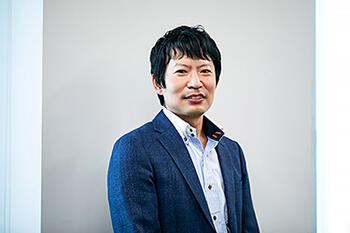
Yuta Tanimura
Deputy Manager, Office of Museum Operation, Miraikan
Ph.D. (Medical Science)
■ xDiversity Project
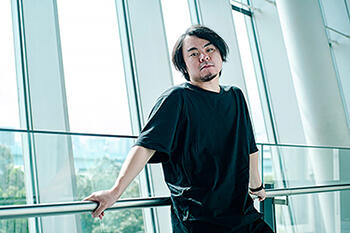
Akihisa Shitara
Doctoral Student at the Graduate School of Library, Information and Media Studies, University of Tsukuba.
Member of Digital Nature Group of the university
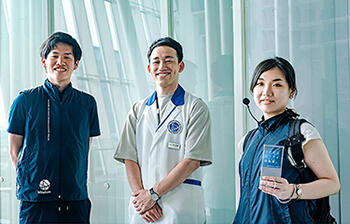
Miraikan's Science Communicators (SCs), from left:
Bunsuke Kawasaki
Completed a Master's degree in Education at the Graduate School of Education, Shiga University
Kouki Sakuma
Completed a Master's degree in Literature at the Graduate School of Letters, Ritsumeikan University
Sakiko Tanaka
Completed a Master's degree in Pharmaceutical Sciences at the Graduate School of Pharmaceutical Sciences, The University of Tokyo
■ Project toward Smart Soft-Manufacturing Revolution
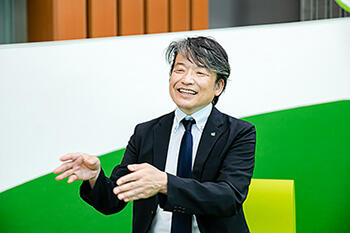
Hidemitsu Furukawa
Ph.D. in Science, Professor in the Mechanical Systems Engineering Major at the Graduate School of Science and Engineering, Yamagata University, and Research Director of the university's Soft and Wet matter Engineering Laboratory (SWEL)
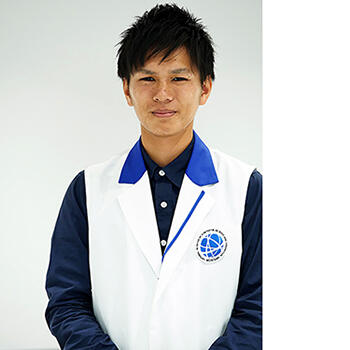
Miraikan's Science Communicator (SC)
Yusuke Date
Completed a Master's degree in Engineering at the Graduate School of Pure and Applied Sciences, University of Tsukuba
Original article was provided by the Science Portal and has been translated by Science Japan.




